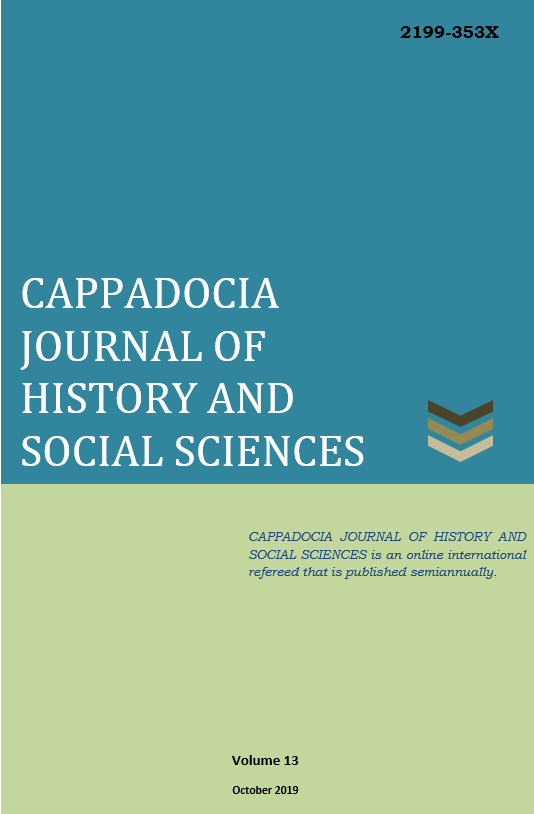Author :
Abstract
Eflak, Boğdan ve Erdel beyliklerinin 1881’de birleşmesinden meydana gelen Romanya Krallığı toprakları XV. yüzyıldan itibaren Osmanlı Devleti’nin himayesine alınmıştır. II. Bayezid, Boğdan’a ait Kili Akkerman Kaleleri ile Besarabya’yı almış; buralara Anadolu’dan getirilen Türkleri yerleştirmiştir. Romanya, XX. yüzyılın ilk çeyreğine kadar Balkan ülkeleri arasında, içinde yaşayan Türk azınlığa hoşgörülü davranan ülke olmuş; dönemin Romen hükümetlerince soykırıma ya da asimilasyona tabi tutulmamıştır. Romanya Türkleri, 1930’dan sonra kendi bölgelerine yerleştirilen Ulahlar ve Kuçovakların olumsuz davranışlarından dolayı rahatsız olmuşlardır. Krallık Romanya’sında yaşanan sıkıntıların kaynağı her ne kadar devlet olmasa da, ortaya çıkan sorunların sona erdirilmesinde Romen hükümetlerinin etkisiz ve yetersiz kalması yüzünden, bu ülkede oturan Türklerin rahatları kaçmış; ana yurt olarak kabul ettikleri Türkiye’ye göç etmek zorunda kalmışlardır. Romanya’dan göç eden Türklerin şüphesiz tek şanslı yanları Romen hükümetlerinin anlayış ve hoşgörüleri sayesinde taşınabilir mallarını yanlarında götürmüş olmalarıdır. 1931-1944 tarihleri arasında Romanya’da Büyükelçilik yapmış olan Hamdullah Suphi Bey’in, Romanya Dobruca Müslümanlarının sorunlarıyla yakından ilgilenmiş olması da Türkiye’ye göçü kolaylaştırmış; binlerce Türk, Romanya’dan Türkiye’ye gelmiştir. Bu dönemde genç Türkiye Cumhuriyeti Devleti, kendisine sığınmak isteyen soydaş ve dindaşlarına kapılarını sonuna kadar açmakla beraber, özellikle kaynak ülkeden maddi varlıklarını Türkiye’ye nakledebilecek olanlara ve şartları daha ağır olanlara öncelik vermiştir. Romanya’dan gelen Türklerin, hem üretken olmaları, hem nispeten daha eğitimli olmaları ve hem de mallarını yanlarında getirme imkânına haiz olmaları sebebiyle bahse konu ülkeden vaki olan kitlevi göçler, Türkiye tarafından da desteklenmiş ve gelen muhacirler muhtelif yerlerde iskan edilmişlerdir. Makalemiz, aynı konuyla alakalı olarak, kendisinden önce yazılmış olan çok kıymetli eserlerden, özellikle dönemin matbuatına yansıyan haberleri daha fazla öne çıkarması ve göçmenlerin çektikleri yol çilelerine ağırlık vermesi açısından ayrılmaktadır.
Keywords
Abstract
The territory of the Kingdom of Romania, consisted of the unification of the principalities of Eflak, Boğdan and Erdel in 1881, XV. Century. It was taken under the patronage of the Ottoman Empire since the 19th century. II. Bayezit received Bashdan's Kili Akkerman fortresses and Besarabia; the Turks were brought from here from Anatolia. Romanian, until the first quarter of the XX. Century was the country that was tolerant of the Turkish minority living within the Balkan countries. This was not subjected to genocide or assimilation by Romanian governments. The Turks of Romania were disturbed by the negative behavior of the Vlachs and Kuchovaks who were settled in their region after 1930. As long as the source of the problems in the Kingdom of Romania was not the Romanian government, the ineffectiveness and inadequacy of the Romanian government affected the comfort of the Turks who were forced to immigrate to Turkey as the main residence. The only lucky side of the Turks who migrated from Romania was the fact that due to the understanding and tolerance of the Romanian government, they have taken their movable goods with them. Between the years of 1931-1944, the Embassy in Romania who had made Hamdullah Suphi Bey, have been concerned with the problems of the Romanian Dobrogea and facilitated Muslims who have migrated to Turkey; thousands of Turks, came from Romania to Turkey. Young Republic of Turkey in this period, but opened up its doors to her compatriots who want to take refuge in and co-religionists, especially and conditions which can be transported to Turkey by tangible assets from the country of origin has given priority to the more severe. Turks are from Romania, as they are productive, and relatively more educated there and both due to their having the opportunity to bring with them their goods the said countries transpired that Mass migrations, supported by Turkey and incoming refugees were resettled in various places. Our article, in relation to the same subject, is distinguished in terms of the fact that the very precious works written before it, especially the news that are reflected in the presses of the period, are emphasized and the migrants are giving weight to the ways of suffering





